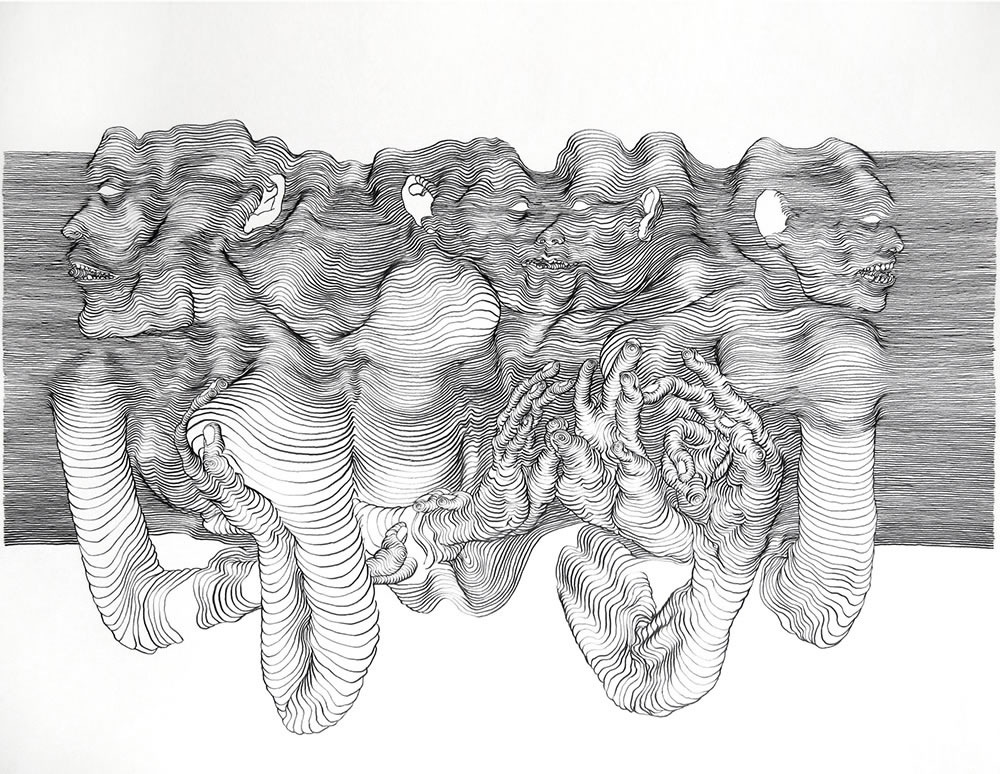

Begin by placing a series of dots at the center of your sheet of paper (in no particular order), then connect them in a way that forms shapes. 3D PatternsģD patterns allow for a sense of creativity and self-discovery. Make sure to fill the entire page, then go back and fill in any meaningful shapes that stand out. Start with your writing tool in the middle of a fresh, blank sheet of paper and create loose lines without stopping. Scribbleįor those who don’t know where to start, begin with simple, freeform drawing a therapeutic way to get ideas onto paper. Offered via Chiswick Auctions (February 2019). Whether drawing mindlessly or meticulously completing figural illustrations, the ideas below will help foster positive thinking. There are a variety of easy drawing ideas that can be leveraged to improve mood. This, in turn, allows artists to trust the movement of their hands instead relying on memorized drawing patterns, improving overall coordination.

Tarcher, author of The New Side of Drawing on the Right Side of the Brain, as you sketch without looking at the paper, the left side of your brain begins to rejects the details and complexities of spatial awareness, allowing the right side of your brain to take over. With continuous line-drawing and blind contour drawing, for example, artists are forced to rely on their instincts, using both senses of sight and touch. The more we draw, the more our hand-eye coordination and fine motor skills develop. It also provides the ability to better understand feelings and emotions without focusing in on the meaning of specific text. Without words, an artist must find a way to communicate through pictorial representations, and this affords us better decision-making skills. Sketching is a visual language, comprising symbols, notations, lines and figural representations. Sold for INR3,120,000 via Osian’s – The Auction House (June 2017). Spontaneous drawing is also said to relieve stress and improve focus, as it relieves your brain from the strain of continuous concentration. Improves Holistic Healthĭrawing, like many other art forms, aids in relaxation and stress relief by forcing us to pay attention to details in the environment, which mimics the experience of mediation. This strengthens both and helps develop the ability to focus and think strategically. When drawing, we actively use both sides of our brain, the right for creativity, and the left for logical thinking. We use our brains when we draw, and this not only releases endorphins, but helps build new connections and pathways. In addition to creativity, there are cognitive and cerebral benefits to sketching. These traits enable critical thinking skills, which can produce new insights and creative thoughts. The personal development and problem-solving skills that emerge from uninterrupted sketching can be applied to everyday occurrences. Enhances CreativityĪccording to research from the National Center of Biotechnology Information, drawing enables the ability to think in a different manner, encouraging open-ended thought and creativity. Understand how you can utilize the healing capabilities and cognitive benefits of drawing, which are outlined below. Sketching is an exercise for the hand, mind, and eyes, and the activity provides benefits that can be applied to many aspects of life, from work to relationships. “Art washes from the soul the dust of everyday life.” –Pablo Picasso The Benefits of Sketching Below, explore the ways that drawing can be beneficial, plus, learn sketching ideas for encouraging a positive mindset. Instead, sketching can be used by anyone as a means to decompress and fine tune a range of critical thinking skills. To reap these benefits, you don’t have to draw with da Vinci’s level of accuracy. Drawing and sketching in particular have been connected with improved creativity, memory, and stress relief, and are also used in art therapy.

Da Vinci’s approach easily translates today, where the benefits of drawing and sketching can offer a great way to disconnect from technology.Įxperiencing art -from the act of painting and sculpting to a visit to an art museum -offers a variety of benefits to well-being including decreased stress and stronger critical thinking skills.

Renaissance artist Leonardo da Vinci was one of the first creatives to take a notebook outside the studio and to the streets, with the belief that it was imperative to have direct contact with life and observe human’s actions to truly harness your talents. Artists of all disciplines use sketching as a means to record ideas, memories, and observations.


 0 kommentar(er)
0 kommentar(er)
